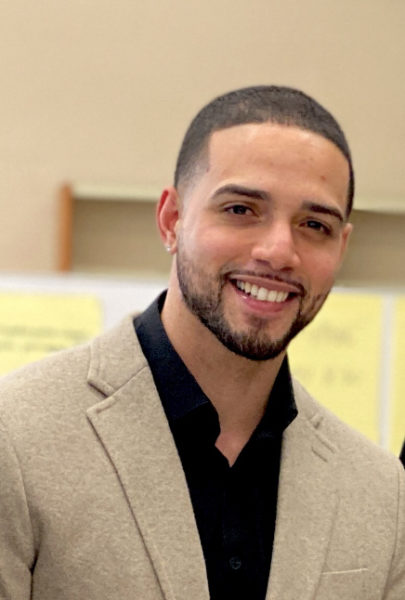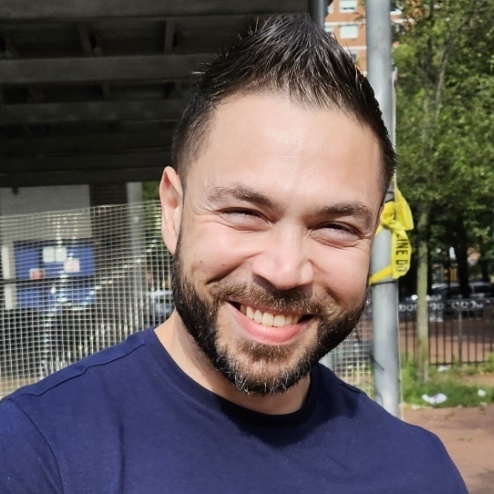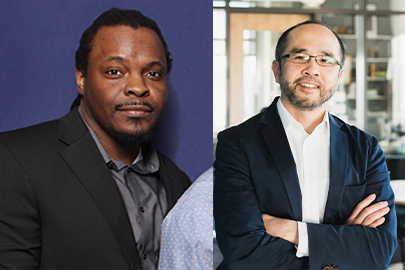Alumnus Jonathan Alvarez ’19 participated in BPI’s Community Engagement in Public Health & Public Education Internship stipend program, holding an internship with Community Governance & Development Council (CGDCNY). Below is his reflection on the experience of his internship.
The new surge of high-rise developments in downtown Yonkers, New York remains an ongoing issue for community stakeholders, developers, residents, and City officials. Restoring urban vitality is wonderful but also raises concerns regarding public policy questions about affordable housing and inclusion. The City of Yonkers – like cities everywhere in the U.S. – are challenged with attracting new investments while expanding housing and employment opportunities for local residents – specifically the lowest-income households.
I learned the complexity of this dilemma during my 10-week internship with the Community Governance & Development Council (CGDCNY). My sources of information include virtual affordable housing committee forums held on Facebook, the 2019 Yonkers Housing Report by Kevin Dwarka LLC & Leviticus Fund, CGDCNY Founder & Director Lamont Badru, and personal interviews with realtors and residents. Each source informed me of the various perspectives concerning the seemingly beautiful transformation of the City of Yonkers.
The population primarily impacted by new luxurious buildings is the Southwest Quadrant of Yonkers – where I grew up as an adolescent and where many of my relatives currently reside. Unsurprisingly, the racial composition of this region has higher proportions of Black American (28%) and Hispanic or Latino (53%). The Area Median Income (AMI) of the region is less than $50,000 with poverty levels growing more rapidly than other quadrants of Yonkers. While the percentage of Yonkers residents living in poverty in 2016 was 17%, the Southwest Quadrant was 35%.7. These numbers are significant because the original Affordable Housing Ordinance draws the AMI from Westchester County, which doesn’t reflect the AMI in Yonkers. In 2016, the Yonkers AMI was less than $65,000.
In my view, the primary force driving this issue is money. City officials – alongside the CGDCNY – are urging developers to increase the percentage of Affordable Housing units from 10% to 20%, but developers won’t budge due to a profit decrease. If developers agree to make more affordable units, they argue that they would lose capital in the long haul. Thus, the conflict lies in local government working to increase affordable housing percentages without scaring investors away and causing a huge flux of divestments from the city. As developers and city officials remain in this bind, restoring urban vitality continues to impact the locals in various ways.
The Culture Shift
A cultural shift transpired with new waves of people, businesses, and development. For Yonkers, the downtown area adopts the appeal of New York City with a sense of multi-cultural plurality. New art galleries, high-end foreign-based restaurants, coffee shops, nail salons, fitness centers, and theaters have emerged – bringing an upscale, hipster-like-hip-hop vibe to Yonkers. This was never seen before. One can now walk into the downtown area and see white people jogging or walking their Yorkies, whereas in the past one would see primarily African Americans and Latinos walking Rottweilers and Pitbull Terriers. The gay culture is more prominent. Many are seen trekking in groups to the local art gallery or the Irish Pub. Luxury vehicles are a norm, parked in the streets and zooming pass by. The area is often populated with people who hail from New York City, who perceive Yonkers as an escape from home. What interested me the most about the cultural shift was the negative traction it created.
The Homelessness
Since downtown Yonkers has adopted a high-end atmosphere, it has become the headquarters for the homelessness. For them, commuters heading to or fro their luxury condominiums or nice cars are sources to access money or food. The nearby upscale restaurants are often chasing away stragglers and panhandlers invading their spaces to disturb customers for money or to use the restroom. In addition, homeless people find shelter in the nearby train station during the cold weather. This phenomenon made me wonder: how many homeless individuals are from Southwest Yonkers and were displaced by this new wave of gentrification?
The Low-Income Community
The residents from the nearby low-income areas raise grievances against the new developments. The primary reason is that most, if not all, cannot afford to live in the area and are denied access due to credit score, criminal history, or income status. Yonkers-native rapper and entrepreneur David Styles (better known as “Styles P”) contended at a recent public forum at City Hall that the Ludlow Project – a new development in downtown Yonkers – must include the low-income families who’ve been displaced and cannot afford the rent. Styles P admitted that he rents for $4,400 a month – far more than the average household income in Southwest Yonkers. The rent in this case doesn’t reflect the AMI in the region. Interestingly, I learned that many individuals cut corners to gain entry into these developments by forging documents or using other people’s identification. It is rumored that many of them are evicted within a year, which generates a fast turnover rate within these buildings.
The Discourse Continues
Advocates for more affordable housing units proposed to modify the preexisting Affordable Housing Ordinance by including incentives for developers. One incentive is to override the requirement of one unit to one parking spot which allows developers to build more affordable units without having to build more parking spaces. Two is to increase the density requirement on the property and to build higher floors. These modifications will allow developers to build more units and capitalize on the space. And the third incentive calls for making the cost of rent reflect the AMI in Yonkers – not Westchester County. If the AMI is adjusted accordingly, more low-income families can afford the units since the rent cap will reflect their median income. Currently, local government is drafting a new and revised Affordable Housing Ordinance with the hope that more developments create more inclusion.
My CGDCNY Internship Experience
Lamont Badru played a vital role in advising me on the core issues surrounding affordable housing policy. We would schedule one-on-one meetings via phone, zoom, or at the CGDCNY office to discuss any of my concerns or clarifying questions. Since Badru has been a longtime advocate on the issue, his knowledge and insights helped to understand the language used in the housing report such as the AMI standards and the logic behind the incentives posed in the new Affordable Housing Ordinance. In addition, Badru’s presentation on the necessary modifications in the new ordinance allowed me to learn the exact position held by the CGDCNY – providing me clarity on possible means to rectify the core issue. At the end, my internship experience informed me on an important, historical issue that continuously impacts the lives of disadvantaged communities in the City of Yonkers – as it does in cities everywhere. It was an honor to take the opportunity to learn more about the people I advocate for on behalf of 914UNITED Inc.

A dedicated community servant, Jonathan Alvarez ’19 is a Social Justice Reform Advocate in the City of Yonkers. He’s a 32-year-old life-long Yonkers resident who promotes the philosophy that change agents, change narratives. After serving a 13-year prison term, he returned home with a mission to give back to the same community he once negatively impacted. He is motivated by his transformative experiences within the criminal justice system. At age 17, he went away with a tenth-grade education. During his incarceration, however, he acquired a GED and later achieved a Bachelor of Arts in Social Studies from the Bard Prison Initiative program. His educational journey and personal metamorphosis have inspired him to be a productive contribution to society. Today, Alvarez wears many labels, tasked with several missions. With anti-racist values, he works hard to abolish systemic racism by passionately advocating for social justice reform. He’s joined the Yonkers My Brother’s Keeper initiative to serve as mentor and staff committee member, touring the public schools to educate young men of color on the urban experience in contemporary America. Inspired to reach the at-risk adolescents in the community, he co-founded and directs a mentorship organization called 914UNITED Inc. He currently facilitates his mentorship services in the Westchester County Department of Corrections (WDCOC). Valued as a Credible Messenger, he holds the Academic Outreach Coordinator position in the Youth Offender Program, providing counsel and educational support to 15 participants from the ages of 18 to 25. Simultaneously, he’s a case manager for the Yonkers SNUG project, working alongside the social worker and the outreach team to reduce gun violence by mediating conflicts and rendering social services to individuals who are at a high-risk of engaging in criminal activities. Leading these various roles, Alvarez’s interest lies in making Yonkers reach its fullest potential in ending socioeconomic injustice.
Community Engagement in Public Health and Public Education Internships
To support career development in the fields of public health and public education, BPI provides professional mentorship and a 10-week stipend to alumni who are engaging in an internship, project, or other forms of work with a community organization. Learn more here.



